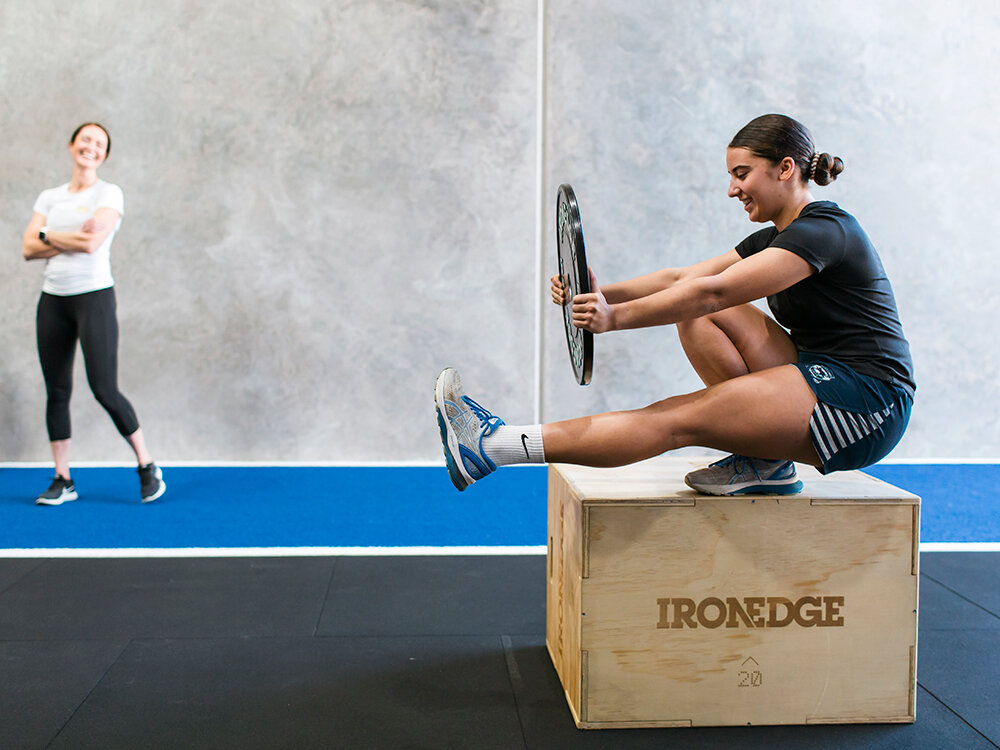Can you Single Leg Squat?
I am extremely partial to the single leg squat as a screening tool as well as a strength-training tool. The reason I love this movement so much is it highlights unilateral (single limb) strength and asymmetry in a way that is specific to sporting movement. For example, most sports involve running, sprinting and hopping type movements involving one limb having to generate and/or absorb force at a given time. Many athletes we have screened in our gym have performed really well on a bilateral (double leg) squat yet show poor control and movement quality in a single leg squat. This is often the result of never having trained single leg movements outside of sports training, which is a bewildering yet highly common thing we see amongst even the highest level of athletes. I believe that the single leg squat is a key performance indicator for an athlete and developing it may be a key factor in gaining a competitive edge. This blog piece will endeavour to explain why and hopefully encourage you to include this movement into your training.
The single leg squat as a screening tool highlights several variables including balance, proprioception, neuromuscular control, ankle, knee, pelvis and trunk stability, glute, hamstring and groin strength and ankle mobility. The way we test a single leg squat is up on a 20-inch wooden box where the non-testing limb can dangle beside the box comfortably. The aim is to achieve 5 slow controlled squats (4 seconds down, 4 seconds up) with good technique. To achieve a 3/3 full score single leg squat technique requires depth to be below 90 degrees, the testing knee tracking straight under hip, hips do not tilt, chest stays up, heel stays down, ankle and knee is stable, five squats performed in a slow manner.
Generally if an athlete performs poorly in a single leg squat test then they are most likely going to struggle with the dynamic version of this test, which is the “hop and stick test”. Most often people struggle to stick the hop with a solid landing, which includes bending at the knee without knee and trunk collapse. A large amount of research has shown that incorrect landing mechanics can put athletes at greater risk of injury. And as most sports are performed in a fast paced dynamic way, being unable to decelerate and absorb force with correct technique understandably puts extra stress on the knee or ankle. Many injury prevention warm up protocols include hopping and landing practice, to emphasis knee control, however if someone struggles to single leg squat with control they are barely going to be able to stick a hop with control. Therefore, the single leg squat can build a strong foundation for more complex, landing mechanic drills, which are paramount for helping to reduce the risk of knee and ankle injuries.
Developing the single leg squat requires slowly progressing the movement so that you are able to feel challenged however can perform almost every rep with good technique. At GAC we use a set of progressions for our single leg squat, which is generally progressed every 2 weeks or once the athlete shows improvement.
Below are some example progressions we use with our athletes:
Week #: 1-2
Exercise: Single leg squat (SLS) sit to stand (20 inch box height)
Sets x reps: 3 x 10-15es
Week #: 3-4
Exercise: SLS Sit to stand to bench height (lower than box)
Sets x reps: 3 x 10-15es
Week #: 5-6
Exercise: SLS to bench height (tap bench)
Sets x reps: 3 x 8-10es
Example:
Week #: 7-8
Exercise: Loaded SLS to bench height or lower
Sets x reps: 3 x 6-8es
Week #: 9-12
Exercise: SLS off box
Sets x reps: 3 x 6es
Complementary exercises that may also help target “weak” areas in the single leg squat are described below:
Issue: Knee rolls inwards
Exercise: Glute med wall hold
Sets x reps: 3 x 20-40s
Example: https://youtu.be/6uF1kgyjQe8
Issue: Ankle unstable
Exercise: SL balance ball throw
Sets x reps: 3 x 10-15es
Issue: Lacking depth
Exercise: Rear foot elevated split squat
Sets x reps: 3 x 6-10es
Example: https://youtu.be/z73pTya9Nb8
Issue: Quad weakness
Exercise: SL leg press
Sets x reps: 3 x 6-10es
Issue: General lack of control
Exercise: Slider clockwork
Sets x reps: 3 x 4-6
Below is an example of improvements seen after a 12 week training block in the single leg squat assessment for one of our athletes Matt, who is an elite endurance runner. You can see in the first pic his knee was collapsing inwards in the lowest portion of his squat. After working hard on single leg squat progressions and glute med and hip strengthening exercises, after 12 weeks we managed to get a huge improvement.
To conclude, I hope this blog has opened your eyes up to the benefits of training and screening the single leg squat. Using the single leg squat as a strength training tool will not only help you develop sport specific single leg strength, but also improve your landing mechanics and decrease your risk of knee and ankle injury.




